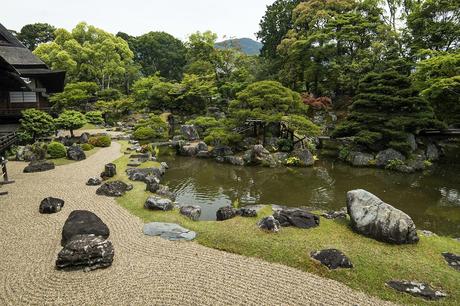
The Japanese have long held a reputation for creating some of the most exquisite gardens in the world. The principles of balance, harmony, and minimalism are just a few of the concepts used to create these stunning works of art.
From rock gardens to tea ceremonies, there is something special about how Japanese gardeners bring nature into their designs. It's an ancient practice that has withstood the test of time, and now you can learn how to incorporate it into your landscape design.
Whether you are starting from scratch or looking for ways to spruce up an existing garden, this guide will show you how to use traditional Japanese techniques when designing your outdoor oasis.
The 4 Essential Elements of a Japanese Garden
Unlike Western-style gardens that use bold colors and floral arrangements, Japanese gardens focus on four essential elements.
1. Plant Life
The Japanese are all about bringing the beauty of nature into their gardens. They use plants such as Bonsai trees, maples, bamboo, and ferns to create balance and harmony in the landscape. When selecting plants for your garden, try to incorporate species native to Japan or those commonly seen in traditional designs.
However, if you're unable to find the right type of plants for your area, you can opt for hardy varieties that are native to your region.
2. Stones and Rocks
Another critical component of a Japanese garden is stones and rocks. In addition to providing texture and contrast to the landscape, they represent the forces of nature in balance.
When selecting your stones, use natural materials such as river rocks or sandstone to keep things simple. You can create interesting patterns with these materials or opt for larger stones for stability.
3. Water Features
Serenity and movement are two of the main themes associated with Japanese gardens; water features are a great way to bring these elements into your outdoor space.
Whether it's a small pond, waterfall, or stream, having a water feature in your garden will provide visual interest and the relaxing sound of running water. If you're worried about creating a complicated setup, there are plenty of easy-to-install water features available on the market.
4. Pathways and Bridges
Connections between different garden sections are essential to creating a cohesive outdoor space. Pathways and bridges are a great way to do this while adding visual appeal to the landscape.
The pathways should be made from natural materials such as gravel, wood chips, or stones. As for bridges, you can choose from traditional Japanese designs made with wood or metal, or you can go with a more modern style.
How To Design and Build Your Japanese Landscape Garden
Creating a Japanese-inspired outdoor space is a beautiful way to surround your home with peace and tranquility. However, it takes time and patience to achieve the perfect balance.
Understand the Basics of Japanese Gardens
Before you begin designing your garden, learn about the basic elements and principles of Japanese design. We've already discussed the four essential elements, so let's briefly discuss the five most important Japanese garden design principles. These include:
- Rikka (balance): Use the elements of your garden to create a sense of balance and harmony.
- Kirei (beauty): Use plants and stones to create a lush, aesthetically pleasing landscape.
- Shizen (naturalness): Incorporate as many natural elements into your garden design as possible.
- Ikioi (power of life): Focus on creating an environment that radiates energy and vitality.
- Tsuki Yomi (harmony with nature): Work with nature to create a tranquil outdoor space.
Adhering to these principles helps you create a garden that embodies the essence of Japanese culture and design.
Choose a Space for Your Garden
After familiarizing yourself with the basics of Japanese garden design, it's time to choose a space for your outdoor project.
This will be ideal if you have a large backyard or patio area. However, if you only have a small space, that's okay too! You can easily create a mini-garden with just a few square feet. The primary goal is to ensure you have enough room for all the elements of your garden.
Decide on Your Landscaping Materials
We have been recommending natural materials throughout this guide. Natural elements align with the Japanese landscape aesthetic and will be easier to maintain over time.
When choosing your landscaping materials, stick to wood, stones, and plants that have a natural look and feel.
Lay Out Outlines and Markers in the Garden Area
Let's say you've picked the perfect spot for your Japanese landscape garden. Now it's time to lay out your design and establish some markers in the area. This vital step will help you determine where each element should go and how they'll look once placed.
Start by sketching outlines with basic shapes like circles, arcs, curves, and rectangles. Use markers to indicate the exact position of each element in your garden.
Doing this step is best before you purchase any materials, as it helps you visualize the design more accurately.
Start Building!
In this last part of your journey, you'll finally get to start building your Japanese landscape garden.
You can begin with foundational elements, such as pathways and bridges, then move on to more intricate features, like ponds and rock gardens.
Build Your Dream Oriental-style Garden With Hanselman
Patience is a virtue, and you'll need plenty of it when creating a Japanese-style garden. But with our help, your dream oriental-style garden is just within reach!
At Hanselman, we provide all the materials and tools you need to design and build your unique Japanese landscape garden. We have everything from bamboo fencing to stones and plants, so you can create a beautiful outdoor space that will be the envy of your neighbors.
Contact us today to get started on your own oriental-style garden.
